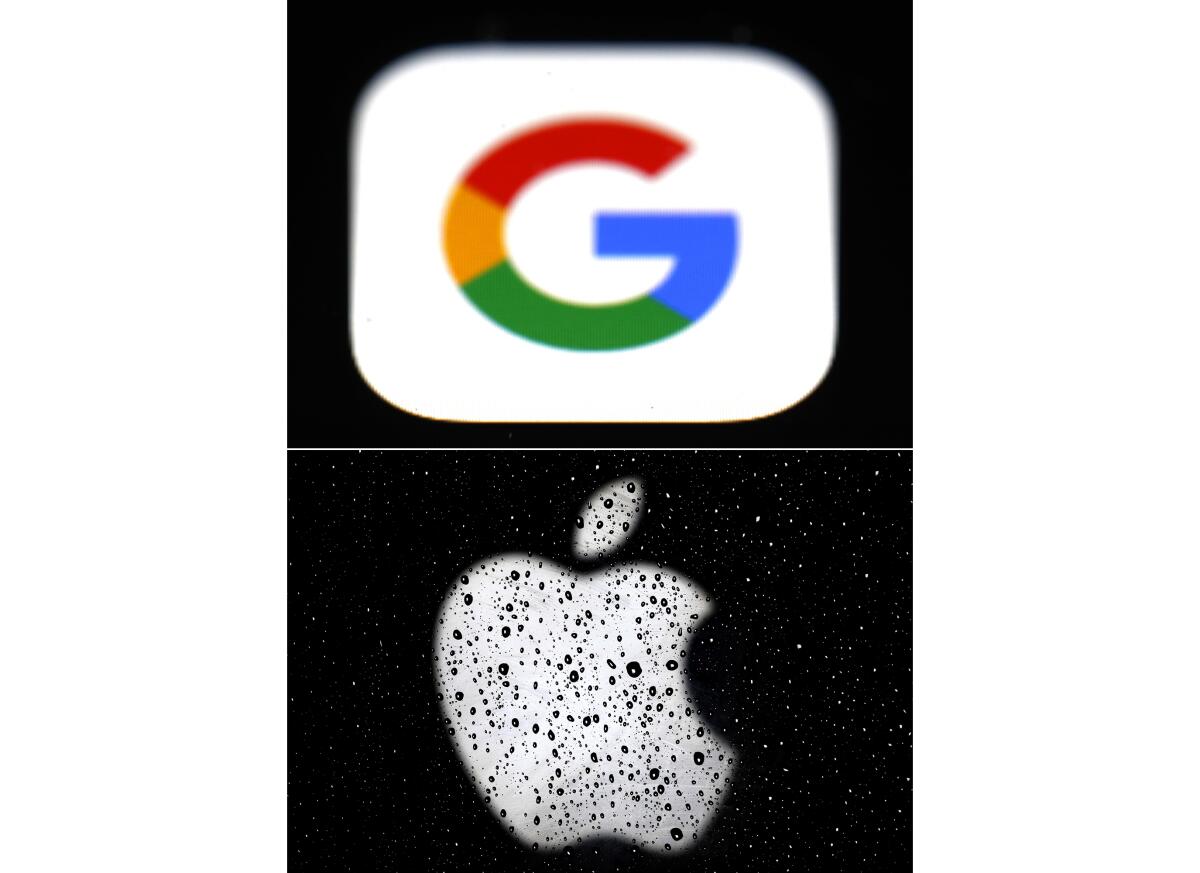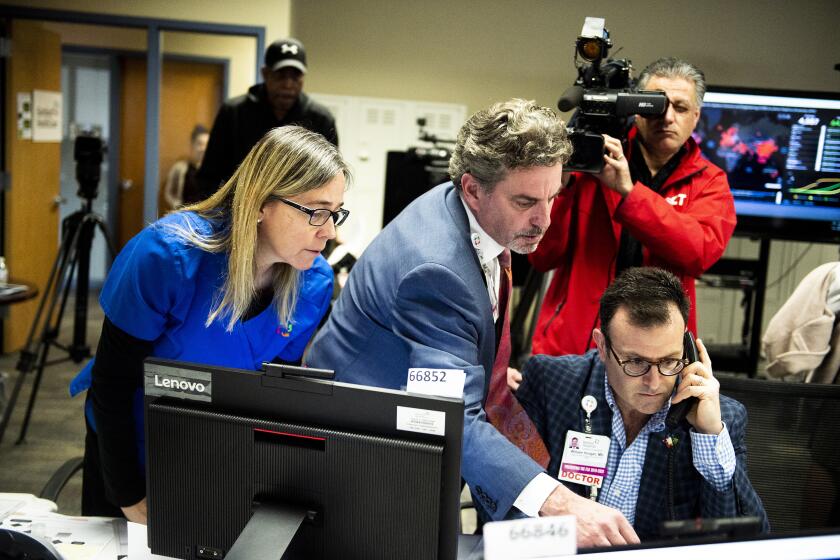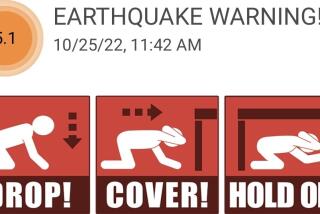Apple’s and Google’s coronavirus tools give health officials more data

- Share via
Apple Inc. and Google released their COVID-19 exposure-notification tools Wednesday, along with changes that will help public health authorities gather more information on who has the virus.
The system, called Exposure Notification, helps the authorities develop apps that notify users if they have come into contact with a person who has tested positive for the coronavirus. Users who’ve downloaded the app for their region will be able to update their status if they test positive. The iOS and Android system will then anonymously notify other users who have come into contact with that person.
“User adoption is key to success and we believe that these strong privacy protections are also the best way to encourage use of these apps,” Apple and Alphabet Inc.’s Google said in a statement. “Over the last several weeks, our two companies have worked together, reaching out to public health officials scientists, privacy groups and government leaders all over the world to get their input and guidance.”
Some governments have criticized the system because it doesn’t let authorities store data on who has the virus and track where it is spreading. Instead, it just notifies individuals if they have been exposed. This has also highlighted the privacy shortcomings of other approaches that collect user location data and store it on government servers.
Still, Apple and Google listed several changes to the system Wednesday that they made after getting feedback from the U.S. Centers for Disease Control and Prevention, local health authorities and dozens of other experts.
One change lets public health authorities contact exposed users based on “a combination of the API and data that users voluntarily chose to input into the app,” the companies said. The API is the Application Programming Interface, the set of software tools that lets these new exposure-notification apps communicate with Apple’s and Google’s operating systems.
Here’s why many public health experts are skeptical of contact-tracing tools Apple and Google are rushing to develop.
Public health apps want to get additional information from users who have been exposed and reach out to them. So Apple and Google are allowing the optional collection of additional data by these apps, including ZIP Codes and user phone numbers. These will be shared only if users give permission.
Each public health authority will be able to set parameters for what counts as an exposure, such as how long someone spent near another user and how close they got. The software uses Bluetooth technology to let phones detect one another.
The system is designed to work with one app per region, such as a country or state, to avoid fragmentation. The companies said multiple U.S. states and 22 countries have requested and received access to the system. Alabama and North Dakota both said they will use it.
The tools have been released via the iOS 13.5 update for iPhones released in the last four years, while Android phone users running Android 6.0 or later are receiving the system via a Google Play download.
Apple’s update also includes other features designed for the pandemic, including quicker Face ID unlocking for users wearing masks and enhancements to multi-person FaceTime video calls.







